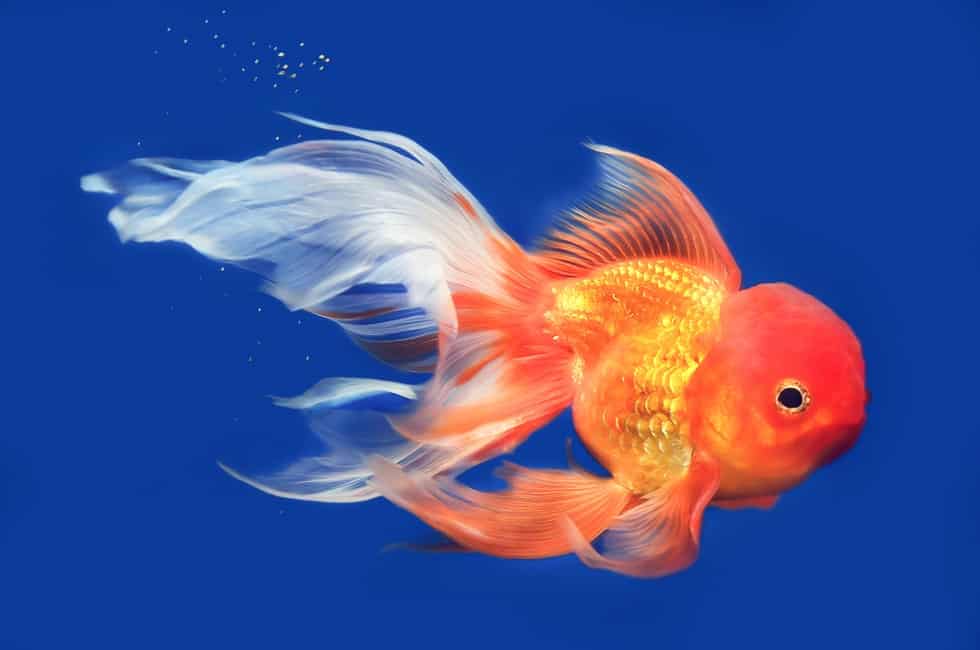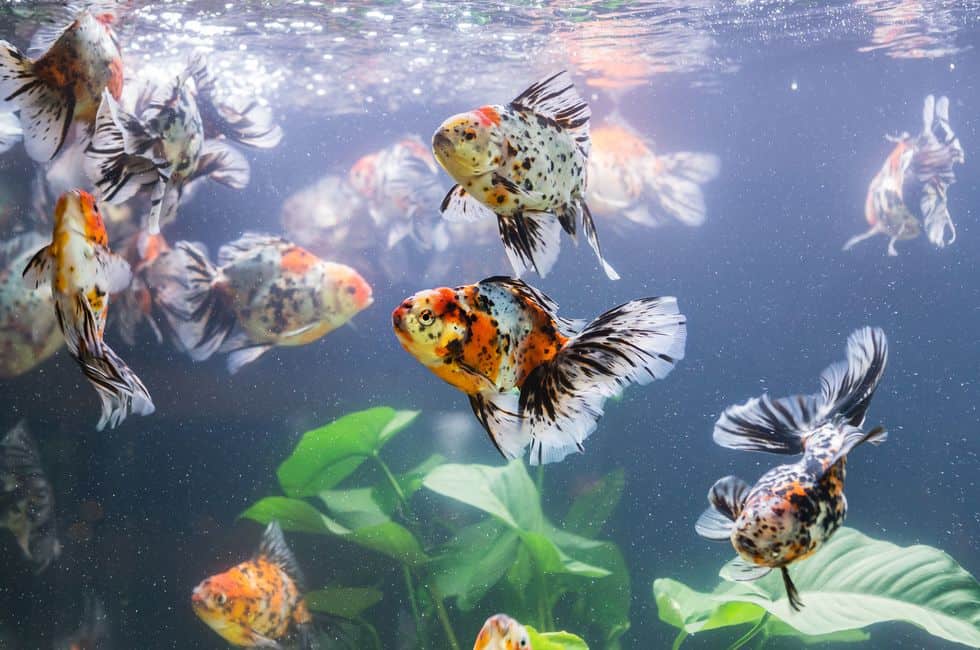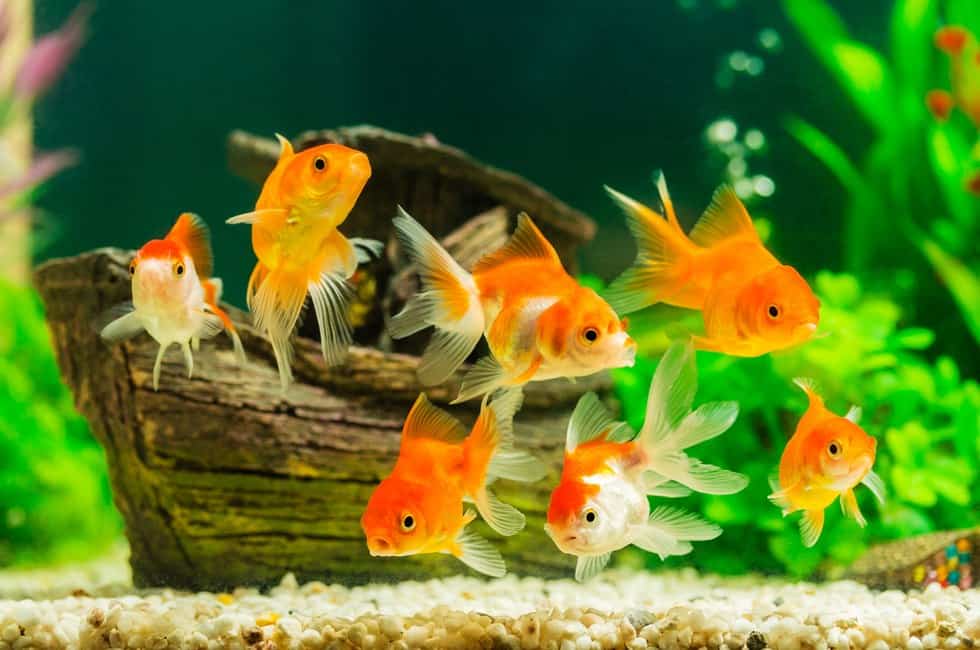Have you ever wondered how small the smallest Goldfish is? This article will provide an answer to this question and you will also learn many other things about the Goldfish.
The Goldfish is native to the eastern part of Asia and there are lots of distinct breeds that can vary by size, fin and tail configuration, body shape, and color. They are not known to be aggressive, but they can eat smaller fish when hungry.
Do Goldfish Stay Small?
The smallest type of goldfish is the Twisty Tailed Goldfish that grows up to 6 inches in length.
There are several kinds of Goldfish species out there, the top 5 are as follows:
You can buy some Really Cool Goldfish on Amazon.
| Gold Fish Breed | Size |
| The Twisty Tail Goldfish (Tosakin) | < 6 inches |
| The Butterfly Goldfish | Up to 8 inches |
| The Ryukin | Up to 9 inches |
| Double tailed Goldfish | 8-10 inches |
| The Single-tailed Goldfish (including Orandas, and Shubunkin). | Up to 14 inches |
How Long Does It Take for a Goldfish to Grow to Full Size?
Are you wondering how long it will take your goldfish to reach its full size? It should take about 8 weeks.
However, the exact timing depends on the environment, water condition, food type, and health. The fries will have the same physical features as the 5-week old goldfish and this growth rate is similar to all varieties of Goldfish.
After the first 5 weeks, the deep-body varieties of Goldfish will start taking the adult shape. The growth rate of deep-bodied Goldfish will slow down after 5 weeks, compared to the slim-bodied varieties.
In order to increase its body length by 25% or more, the slim body goldfish will tend to double its body weight.
It takes four days for the eggs to hatch and spawning will take place with fries having body lengths up to 4mm.
Types of Goldfishes and Their Characteristics
There are lots of different Goldfish species around, though the Butterfly, Ryukin, Orandas and Twisty Tail Goldfish tend to be the most popular.
The common Oldie Goldfish are common feeder fish, often found in bright orange colors. These are single tail Goldfish that can grow up to 12 inches in length.
The Comet Goldfish has a longer fin than Oldie Goldfish and has a metallic red color. This goldfish can grow up to 14 inches in length.
The slender and speckled Shubunkin Goldfish comes with metallic and clear scales on its body. It is a sturdy fish that can grow up to 14 inches The Wakin Goldfish is a single tail fish that grows up to 12 inches and is characterized by a blend of white and red colors.
The Jikin is a short double-tail Goldfish with red lips, red gills, red dorsal fins, and red scales. It grows up to 10 inches in length. The Watonai Goldfish comes in a variety of colors and can grow up to 12 inches.
The Egg-shaped Goldfish has a slim and delicate body. The Frank Fantail Goldfish comes in a metallic orange color and can grow up to 8 inches.
The Ryukin Goldfish is a tall and proud fish with a bigger hump. It comes in solid red and white colors and grows up to 9 inches in length. The Tamasaba is a single tailed Goldfish known for its very fast swimming style. It grows up to 8 inches.
The Telescope Eye Goldfish has protruding eyes and it is also referred to as the Popeye. It comes in lots of different colors. The Angelic Veil-tail comes with a square-shape fin that is constantly flowing. It can grow up to 12 inches in length.
Other Goldfish species that are worth mentioning include: the Butterfly, Pom Pom, Oranda, Pearl Scales and the Dorsal-less varieties.
How to Provide Good Tank Conditions for Optimal Growth of Goldfish
A Goldfish can increase its body length by as much as 50% in the first 7 days, but these rates are totally dependent on both the type of food provided and aquarium conditions.
Goldfish are predominantly lovers of fresh water. Even though they may tolerate hard and soft water, they will not tolerate water that contains high ammonia or has a high pH, neither will they tolerate water with extremely low dissolved oxygen, especially if this has been caused by pollution.
Get this Aquarium Water test Kit, its really helpful!
Frequent water changes are required to raise Goldfish in tanks. Due to their extensive growth—they can grow to be up to 14 inches long—these fish must be kept inside a tank that holds up to 50 gallons of water. You need to change as much as 20% of tank water on a daily basis.
If you keep fries in crowded conditions, you may have to replace as much as 30% of the water on a daily basis. Goldfish are known to produce hormones that can inhibit their growth, and this is why people believe that a Goldfish will only grow to the size of its container.
The build-up of certain hormones produced by Goldfish will also affect the growth of any tank mates, hence you need to replace tank water as frequently as you can.
It is also important that you provide sufficient space or add filtration. Goldfish will require up to 24 sq. inches of filtration. This will provide enough oxygen for the fish to process the food needed for optimal growth.
While a water temperature of 24°C is needed to hatch the eggs and maintain optimal growth into the adult stage, some species may require slightly higher temperatures in order to keep their scales and prevent color changes.
You must avoid placing your aquarium in direct sunlight, to avoid the water becoming excessively hot. Though you do not need to actually shade the tank, it is best placed in a darker, quieter area in the home.
Goldfish are known for their huge appetite. The fry, for instance, will eat an equivalent amount of its body weight in a day. The fry or young Goldfish must be fed live food containing a sufficient amount of protein daily and this can be supplemented with prepared meals after the first 5 weeks.
Get this Goldfish Food from Amazon.
Goldfish must be kept at optimal health. Fish that are smaller than 2 inches in length are susceptible to a wide range of parasites including the body flukes and gill flukes. These parasitic infections will either kill the Goldfish or slow down its growth.
If you are starting with fries, then you need to ensure they are fed twice daily and are given sufficient food that can last for at least an hour. Giving Goldfish too much food can make them exceed their average growth. Brine shrimp is one of the best natural foods for goldfish.
Conclusion
In conclusion, the Goldfish is a freshwater fish and it is one of the most commonly reared fish in home aquariums. Though Goldfish can be kept in tanks and reared by beginners and experts alike, they must be taken care of just like any other aquarium fish.
The only way you can help the goldfish to attain its optimal growth rate is to ensure the right tank conditions, most especially the water pH.
You will know that your Goldfish is becoming uncomfortable when it starts rubbing its body against the tank components.
For instance, a Goldfish may rub its fin against rocks and plants when the pH is higher than 8.5. The only way to avoid this issue is to change at least 25-30% of the tank water on a daily basis.
In addition to replacing the water frequently, dead matter (including plants) must be removed immediately because they contribute to higher pH levels.
You may want to limit the feeding of Goldfish to twice a day to avoid food remnants that can excessively lower or raise the water pH levels.
Make sure you keep a tank mate of the same size as your Goldfish, as a more aggressive and bigger tank mate may kill your Goldfish by mistakenly seeing it as food.
Goldfish are upward swimmers, they enjoy moving around water plants and they must be provided with sufficient oxygen.



